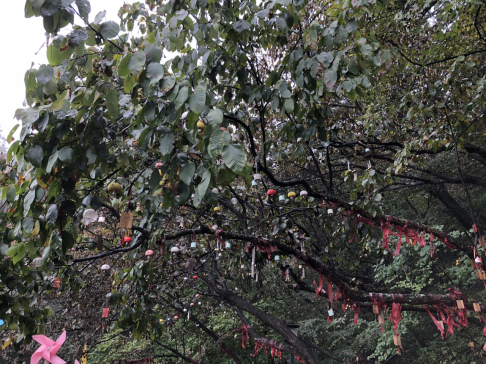【目的】了解鹅耳枥属(Carpinus)树种叶绿体基因组基因组成及结构特征,为鹅耳枥属的系统发育及基因组进化研究提供参考。【方法】获取鹅耳枥属16个树种的叶绿体基因组,对其进行基因注释,利用生物信息学方法比较叶绿体基因组间的结构特征与变异程度,并以麻栎(Quercus acutissima)为外类群分析了鹅耳枥属的系统发育关系。【结果】鹅耳枥属16个树种的叶绿体基因组均为双链环形结构,均包含1个长单拷贝区(LSC)、1个短单拷贝区(SSC)以及2个反向重复区(IRa和IRb)。叶绿体基因组大小差异较小,最大差异仅1 902 bp。基因排列顺序基本一致,各基因数量相对保守,其中核糖体RNA(rRNA)数量最为保守,所有树种均为8个。此外,鹅耳枥属树种叶绿体基因组在序列长度、基因组成以及GC含量等方面相对保守,但4个边界存在明显的多样性。鹅耳枥属叶绿体基因组中非基因编码区存在较大差异,变异程度较高,而基因编码区差异较小,具有较高的保守性。在叶绿体基因组4个部分中,LSC区的变异程度最高,IRa区的变异程度最低。鹅耳枥属叶绿体基因组中psbA、rps16、atpA、rps19、ndhF、ndhI以及ycf1等基因的编码区存在显著差异。此外,ycf3-trnS, trnS-rps4, trnH-psbA, psbZ-trnfM, matK-rps16, rps16-trnQ, trnQ-psbK, ccsA-ndhD, accD-psaI, ndhC-trnV, trnT-trnL, trnF-ndhJ, atpB-rbcL, trnT-psbD, trnE-trnT, trnD-trnY, rpl32-trnl等基因间隔区的非编码区差异较大。绝大部分基因的编码区长度十分保守,含内含子的蛋白编码基因长度变异主要来源于内含子长度或编码区长度。系统发育分析结果将鹅耳枥属划分为鹅耳枥组与千金榆组,此外由于地理隔离导致欧洲鹅耳枥(C. betulus)、美洲鹅耳枥(C. caroliniana)与鹅耳枥属其他树种表现出较远的亲缘关系。【结论】鹅耳枥属树种叶绿体基因组具有较高的保守性,其基因排列顺序基本一致,未检测到大规模的倒位或基因重排,但其IR区与单拷贝区(SC)边界存在明显的多样性。基于叶绿体基因组构建的系统发育树在一定程度上可以揭示鹅耳枥属树种的系统发育关系。
【Objective】Chloroplasts are the organelles responsible for the photosynthesis in green plants. The chloroplast genome structure and gene composition of higher plants are relatively conservative, but can show different degrees of variation due to hybridization, evolution and gene introgression. It contains a significant amount of DNA information, which is used in species classification, phylogeny and origin. Carpinus is one of the most evolved genus in the Betulaceae family. Although the chloroplast genomes of more than ten species of Carpinus have been sequenced and assembled, only a few of these have been fully studied. Therefore, this study aimed to understand the chloroplast genome gene composition and structural characteristics of Carpinus, reveal the contraction and expansion of the inverted repeat (IR) region boundary, and lay a foundation for further studies on phylogenetic relationships, species identification, genome evolution and resource utilization and provide a reference for the development of Carpinus DNA barcoding. 【Method】GeSeq was used to annotate the chloroplast genome with Ostrya rehdariana as the reference genome. Then, the number of genes, genomic DNA base composition (GC) content, large single copy (LSC), small single copy (SSC) and two IR regions of the chloroplast genomes of 16 Carpinus species were obtained. The structure, boundary contraction and expansion, and sequence variation were then compared by using OGDRAW, IRscope and mVISTA programs. The phylogenetic relationship of Carpinus was analyzed with Quercus acutissima as an outgroup. 【Result】We found that the chloroplast genomes of 16 species were circular, double-stranded, which were tetrads containing one LSC and SSC and two IRs. The difference in genome size was small, and the maximum difference was only 1 902 bp. The differences in IR region length and GC content among species were small. The gene sequence length and composition were relatively conservative, with the number of rRNAs (8) as the most conservative; however, there was significant diversity at the four boundaries. There were differences in the non-coding regions, and the degree of variation was high; however, the difference in gene coding region was small and highly conservative. Among the four parts of the chloroplast genome, the LSC region had the highest degree of variation, while the IRa region had the lowest. There were significant differences in the coding regions of psbA, rps16, atpA, rps19, ndhF, ndhI and ycf1 genes. In addition, the non-coding regions of the intergenic regions of ycf3-trnS, trnS-rps4, trnH-psbA, psbZ-trnfM, matK-rps16, rps16-trnQ, trnQ-psbK, ccsA-ndhD, accD-psaI, ndhC-trnV, trnT-trnL, trnF-ndhJ, atpB-rbcL, trnT-psbD, trnE-trnT, trnD-trnY, and rpl32-trnL were significantly different. In addition, the coding region length of most genes was very conservative, and the variation of coding gene length of proteins containing introns originated from the change in intron length or coding region length. The phylogenetic tree supported a division of Carpinus and Distegocarpus sections. In addition, due to the significant geographical isolation,C. caroliniana and C. betulus showed a relatively distant phylogenetic relationship with other species of Carpinus. 【Conclusion】The chloroplast genome of Carpinus was highly conservative with little gene sequence differences; no large-scale inversion or gene rearrangement was detected. However, the IRs and SC boundaries had significant diversity. In addition, some genes with significant differences in coding or non-coding regions may provide a reference for developing new DNA barcodes of Carpinus species.
 PDF(15813 KB)
PDF(15813 KB)


 PDF(15813 KB)
PDF(15813 KB)
 PDF(15813 KB)
PDF(15813 KB)

